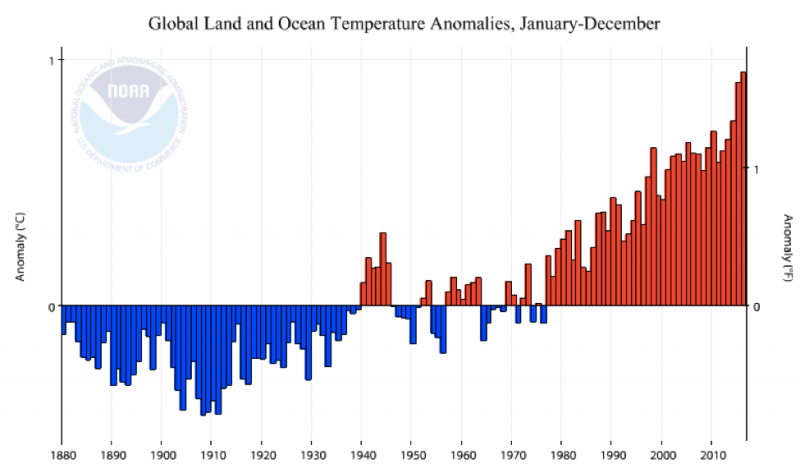2. Human activity is largely responsible for this warming.
Over geologic time, the Earth’s average temperature has changed as a result of the sun’s output, the tilt and position of the Earth in its orbit, and the concentration of greenhouse gases. Scientists have developed a good understanding of the natural variations in these factors by examining different proxies for ancient temperatures. Observations tell us that these natural factors have not been changing over the last hundred years or so in a way that would explain the observed temperature increases.
In contrast, greenhouse gases have been changing in a way that can explain the observed temperature increases. The pre-eminent record of modern atmospheric carbon dioxide (CO2) concentrations is based at the Scripps Institute of Oceanography. Researchers there have been sampling pristine air from a mountaintop in Hawaii every month since 1958 and analyzing its composition. Their observations show that both the concentration and isotopic composition of CO2 is changing, and is consistent with manmade sources, including the carbon emissions from burning fossil fuels.
Moreover, physics tells us how different climate variables will change the temperature of the atmosphere at different heights. For example, changes in solar output will heat the atmosphere uniformly, while changes due to greenhouse gases will warm the surface but cool the higher part of the atmosphere (the stratosphere).
The National Centers for Environmental Information, run by NOAA, conduct monthly observations of atmospheric temperatures at different levels. Its 39-year record shows that the temperature change is not uniform. This is consistent with the effect of greenhouse gases, and inconsistent with other types of natural effects (e.g., changes in the sun’s output).
3. The impacts of climate change are growing, and we need to stop adding to the problem.
The result of this buildup of greenhouse gases is that we’re trapping heat within the climate system. The basic physics behind this has been establish for over 100 years. But climate change isn’t just a matter of the air temperature being a few degrees warmer.
- Higher levels of CO2 in the atmosphere lead to increased acidity in the oceans, which is damaging to shellfish and other marine life.
- Warmer water temperatures and melting of glaciers (due to warmer air temperatures) increase average sea level across the globe.
- Climate change is affecting the frequency and intensity of heat waves, heavy rainfall events, and several other types of extreme weather and disasters.
Some observed climate changes are not bad. For example, growing seasons are lengthening in some parts of the country and costs for winter heating go down when temperatures are mild. But the overall impacts are estimated to be negative and costly.
The good news is that we’re making progress, and that we have many of the tools right now to make a difference, including expanding use of renewable power; zero-carbon nuclear power, carbon capture, use and storage; energy efficiency technologies, and electric vehicles. Many businesses, cities, and states are pursuing clean energy and clean transportation to improve public health, save money, and create jobs.
The question is not whether climate change is happening, but what we want to do about it.

